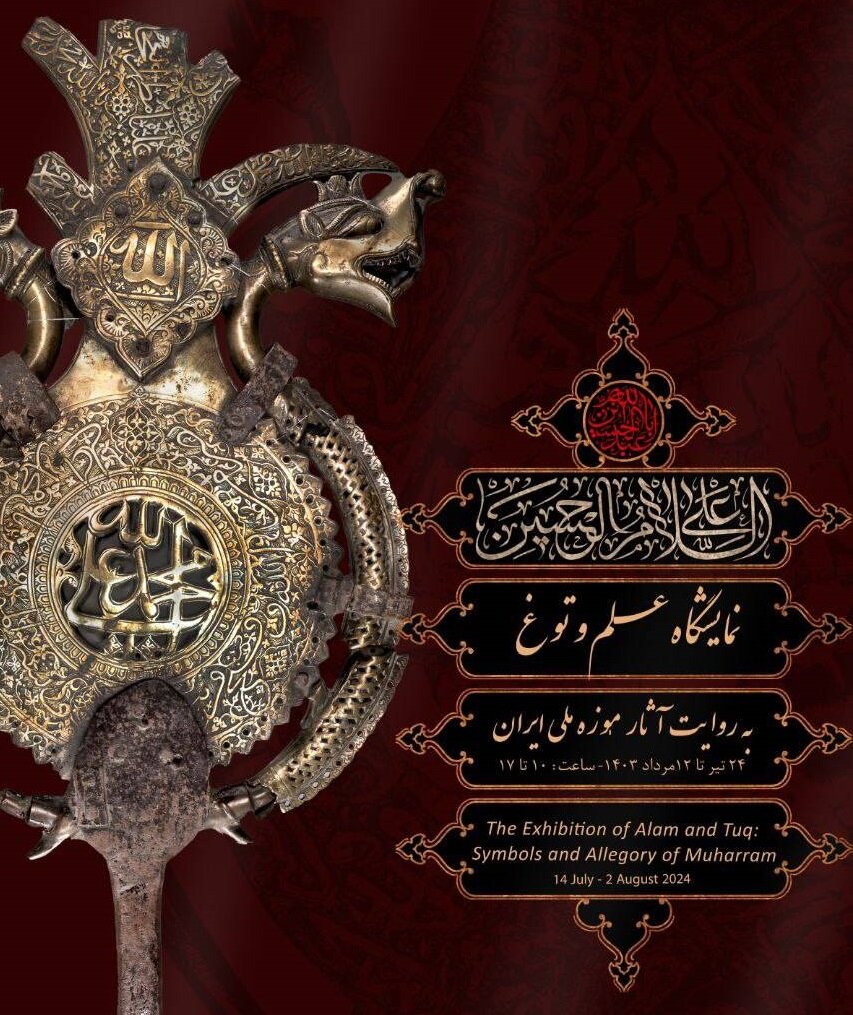National Museum hosts meeting on Muharram mourning symbols

TEHRAN - A specialized meeting was held on Sunday at the National Museum of Iran to commemorate the exhibition “Alam and Tuq: Symbols and Allegory of Muharram”.
The meeting featured three lectures that elaborated on objects related to Muharram rituals, particularly the Tuq.
The first lecture was delivered by Karam Mirzaei, head of the Museum of Archeology and Art of the Islamic Era, who introduced the exhibition and highlighted the significance of the Tuq, Alam, and other related works in the museum about Muharram in Iranian culture. He emphasized that the exhibits showcased are being displayed for the first time in the National Museum of Iran.
The second lecture was presented by Ali Moloudi Arani, a visiting professor at Kashan University, who discussed the historical sources and archaeological findings related to mourning rituals in Iran. He highlighted the importance of Muharram rituals and its roots and diversity.
Furthermore, he emphasized that the mourning rituals of the Muharram with various rituals from the Safavid period became the largest annual ritual gathering of Iranians, it addressed the mourning rituals in the different parts of Greater Iran.
The third and final lecture was delivered by Mohammad Mashhadi Noushabadi, an associate professor at Kashan University, who spoke about “Iranian Tuq”. Mashhadi Noushabadi explored the history of Tuq in Iran, from its origins in the 4th century AH to its widespread use in ritual ceremonies during the Safavid period. He also compared Iranian Tuq with Turkish Tuq and highlighted its unique features, including its use of plant and snake symbols. At the end of his speech, Mashhadi Noushabadi emphasized the need to restore, record, and conserve these exquisite and valuable historical objects, focusing on the extent of historical studies and knowledge in Hosseiniyehs and mosques in Iran. He expressed his hope that the Ministry of Cultural Heritage, Tourism, and Handicrafts will take the necessary measures regarding the registration and protection of Tuqs and Alams in the Hosseiniyehs of the country so that this valuable heritage can be protected and introduced.

The exhibition “Alam and Tuq: Symbols and Allegory of Muharram” is on display at the Museum of Archeology and Art of the Islamic Era until further notice. The exhibition showcases Safavid and Qajar Tuqs from the National Museum of Iran and is open to visitors from 10:00 to 17:00 every day.
The show features 14 meticulously restored objects from the Safavid and Qajar periods, highlights the craftsmanship and religious significance of the era. Among the objects on view are the Tuqs, flag heads, and steel fruits—elements deeply embedded in the Muharram ceremonies. These items, crafted from brass, bronze, and steel, are being exhibited for the first time post-restoration. Particularly noteworthy are the steel fruits, including quince and bergamot oranges, which are adorned with intricate gilding motifs and inscriptions, symbolizing the rich artistic heritage of the periods they represent.
The Alams, also known as processional standards, are central to the Shia Muslim community’s commemorations of the martyrdom of Imam Hussain (AS) and his loyal companions in the Battle of Karbala.
During the Safavid era, Tuqs attained greater prominence, adorned with inscriptions of Quranic verses, the names of God and the Imams, blessings, prayers, dedications, and construction dates. The designs from this period also incorporated dragons and snakes, as seen in surviving miniatures, adding a unique artistic element to these ritual objects. The Iranian Tuqs are particularly notable for their two dragon or snake heads, which cover the upper part of the Tuq, evolving into what is known as “Alamat” or “Alam” banners. These banners often feature metal sculptures of animals and fruits placed between sharp blades.
AM
Leave a Comment